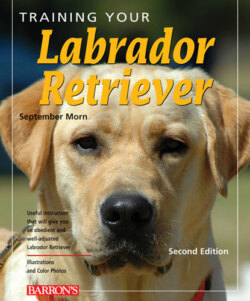Читать книгу Training Your Labrador Retriever - September Morn - Страница 21
На сайте Литреса книга снята с продажи.
Interpreting a Pedigree
ОглавлениеA pedigree is a genealogy chart, the written record of a dog’s ancestry. Pedigrees are arranged by generation, with the sire’s name listed above the dam’s. Included with names of ancestors are their show and working titles. Some pedigrees also list colors and health clearances or certifications. Simply having a pedigree does not necessarily mean a dog is the product of careful breeding; it merely means the dog has a traceable lineage. To know whether a dog’s pedigree is good you must know how to interpret it.
■ At the left of the document, on a line by itself, is the name of the dog whose pedigree you’re examining. To the right of that are his sire and dam. To their right are his grandparents, and so on, back through the generations. The farther to the right a dog’s name appears in the pedigree, the less genetic impact it has on your pup. The same dog may appear several times in a pedigree, multiplying that dog’s genetic influence.
■ The letters before or after the names in a pedigree are abbreviations for titles earned. Championships are listed before the name, and performance titles after it. Take a hypothetical example: DUAL CH. Buddy Ombudsman O’Budd, CDX, TD. Translation? Buddy has earned both Field and Conformation Championships, the Companion Dog Excellent obedience title, and the Tracking Dog title. From this we may gather that Buddy is a wonderful allaround Lab—beautiful, sound, smart, and obedient. We know this because he could not otherwise have earned those letters.
There is an old saying: “Breed the best to the best, then hope for the best.” That’s what responsible breeders do, and that’s what to look for in a pedigree. Not every Lab with titled parents and grandparents turns out to be a star, of course, but the odds are far better with a background of champions and performance dogs than with unproved stock.
